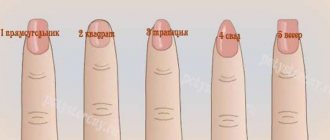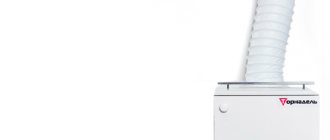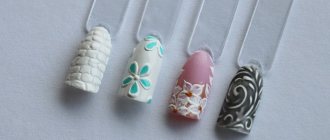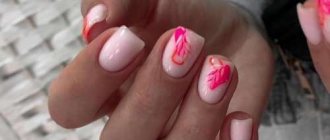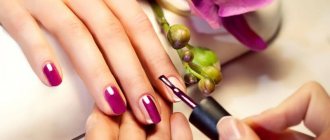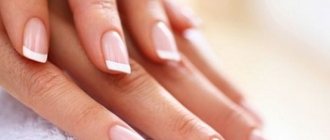Women regularly get manicures, applying varnishes of all kinds of colors to their nails. However, few people think about their composition. However, recently this issue has received much more attention. Women are increasingly not just assessing the color of a new coating, but also carefully studying the composition, finding out whether the varnish contains formaldehyde. A lot has already been said about the harm of this substance - experiments, studies and tests have been carried out. What did the experts manage to find out? Is it really that harmful? What consequences can regular use of varnishes containing formaldehyde have on your health and nails? Let's try to figure this out together.
What is formaldehyde?
Formaldehyde is a chemical compound that you may have heard of under another name: formaldehyde or formic aldehyde. In varnishes, it is used as a preservative, providing them with the desired consistency, preventing premature drying in the bottle, making them more stable. In large doses, it is a powerful carcinogen, but in the percentage in which it is contained in varnishes, it cannot cause serious harm to health.
Despite this, representatives of the fair sex continue to be tormented by the question of the safety of using such nail polishes. Formaldehyde is found quite often in nail polishes. It would be more accurate to say that it is almost always present in them. Moreover, it can be found in nail medicinal products marketed as growth stimulants. Indeed, the effect of their use cannot be ignored - nails begin to grow faster, thicken, become denser, and become stronger. If it is believed that formaldehyde only causes harm, then how is this possible?
Opponents of such treatment are of the opinion that under the local toxic effects of formaldehyde, the nail plate dries out, and as a result it becomes thicker. There is another version according to which the harmful effects are so great that the body begins to grow nails so that dangerous substances do not penetrate the blood.
Nails, despite their dense structure, perfectly allow various substances into the body. From 10 to 80% of the active substances applied to the nails enter the blood. If we talk about formaldehyde, it tends to accumulate, collecting under the nail plate, and is very difficult to remove from there.
Compound
Since ancient times, women have used decorative coatings for nails. Previously, they were available only to noble people, but over time, paints were invented that most women use. Over the course of several decades, the composition of the paint has changed.

Today, regardless of the manufacturer, similar products have a similar composition. They contain the following groups of substances.
- Plasticizer components. Responsible for the elasticity of the varnish when distributed over the nail plate. Substances of this group give the coating durability.
- Solvents. These are the ingredients that allow the paint to maintain a liquid consistency for a certain period of time. Most manufacturers use alcohol components as solvents.
- Pigmented particles. These are substances on which the color palette of the coating depends.
- Polymer compounds. Components designed to add shine to the finished coating.
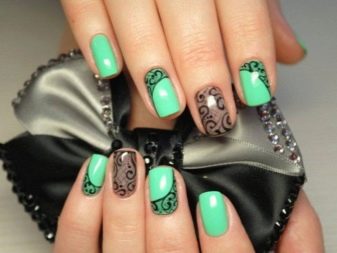
The last group may include formaldehyde compounds.
How is formaldehyde harmful?
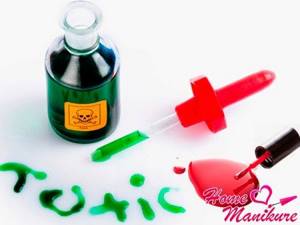
In high concentrations, this compound is very dangerous and toxic - it leads to depression of the nervous and respiratory systems, causing migraines, blood damage and asthma. In case of severe poisoning, it can even lead to death. But don't worry too much. In varnish, its concentration is so insignificant that it cannot provoke any of the listed diseases, much less lead to death.
Formaldehyde is widely used not only in nail polishes, but also in many other cosmetics. For example, it can often be seen in shampoos. True, the permissible concentration is only 0.2%, while many unscrupulous manufacturers increase it to 2-4%, which is completely unacceptable.
The thing is that the cost of formaldehyde on the market is very low. This allows significant savings on the production of various products. In European countries and America, this substance has long been prohibited for use in cosmetics. There it is replaced with palmic acid. Some domestic manufacturers have also started to follow this technology.
In addition to varnishes and cosmetics, we have to deal with formaldehyde every day, since it is used in the manufacture of plastic products and furniture, where it is found in much higher concentrations. So the harm of varnishes containing formaldehyde is very relative.
The main advantages of gel coating
A spectacular manicure with a glossy gel coating fascinates with its perfectly even tone and play of shades. In addition, it has a number of positive features, thanks to which it is preferred to other types of manicure.
- Strengthening . This is a real find for thin and brittle nails. The varnish and auxiliary agents applied in several layers protect the plates from mechanical damage and aggressive chemicals. At the same time, the vitamins included in the product help strengthen nails.
- Persistence . The gel coating is worn for 2-3 weeks, maintaining its original appearance. At the same time, the application technology allows you to correct a damaged nail without removing the entire manicure.
- Quick drying . Gel polish dries in 1-2 minutes using a UV lamp and in 30 seconds using an LED device. This saves time spent on the procedure.
- Versatility . Any length of nails is suitable for gel manicure, which means there is no need to undergo artificial extensions. In addition, the manicure looks natural on short nails.
- Gel polish retains a glossy shine for a long time , does not become cloudy and does not fade under the influence of external factors.
- Affordable cost of the procedure . For a reasonable price you can get an excellent, long-lasting manicure.
- Easy to remove coating . You don't have to visit a salon to remove gel polish. You can do this yourself using a special liquid and foil that creates a vacuum.
- Independent use . If you wish, you can perform a manicure at home by purchasing all the necessary products and a drying lamp. This set does not require large investments, but it helps to save significantly on a visit to the specialist.
Manufacturers of gel polishes offer a wide selection of colors and many design options using different decor.
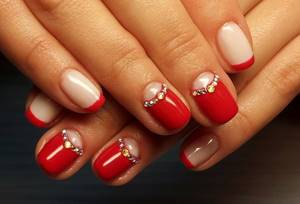
Are there safe varnishes?
If you prefer not to risk your health for the sake of beauty, then you can be advised not to purchase cheap cosmetics. Safe varnishes exist; they can be identified by the “5-free” mark on the label . This means that it does not contain formaldehyde, formaldehyde resins, toluene, camphor and dibutyl phthalate - quite dangerous toxins. All of them are contained in almost every inexpensive nail polish. Now many companies are concerned about the safety of their products, so they have stopped including them in their composition.
There is another category of safe varnishes. On them you will find Fr. You will not find formaldehyde, toluene or dibutyl phthalate in their composition. If you are really concerned about your health, then it is better to pay a little more and purchase these safe analogues.
So we have found out everything you need to know about the damage to nails that you can expect from formaldehyde. Next, it’s up to you to decide whether to continue using varnishes containing it or give preference to more expensive, but completely safe analogues that will highlight your beauty and protect your health. If you are interested in the composition of varnishes, then it will be useful for you to watch a video in which expert Elena Savenkova will talk about choosing a safe and high-quality decorative nail product.
Advantages and disadvantages of shellac
Shellac is a natural resin with unique properties.
This is an innovative product that was introduced by the American company CND in 2010, which has become a serious competitor to conventional manicure, as well as gel nail extensions.
The procedure is performed with professional tools such as an ultraviolet lamp.
Therefore, it is best to perform the procedure in a salon.
However, if you need to remove shellac, you can purchase a special product and remove the coating yourself at home. Pros of shellac:
- Exceptionally resistant to damage. You won't be able to remove it with regular nail polish removers.
- Safe for nail plate. It will not deplete it and will not cause allergies.
- More than two weeks does not require correction.
- The product does not have any strong, intrusive odors.
- Safe for pregnant women. Does not contain harmful components such as formaldehyde. It is worth noting that shellac on the nails of pregnant women lasts less time and the reason for this is hormonal changes in the entire body.
- Shellac will strengthen your brittle nails and help them grow to the required length.
- Wide palette of fashionable and bright colors.

Cons of shellac:
- Compared to a traditional manicure, applying shellac will take at least half an hour.
- The cost of applying shellac is sometimes comparable to the cost of gel extensions, and correction must be performed every few weeks. If your nails grow too quickly, this procedure may seem rather wasteful.
- Shellac is easily affected by temperature changes . For example, if you are cleaning the house and wearing gloves, the nail may expand and then return to its original shape. During this process, cracks may appear on the surface of the nail, through which fungus can become infected.
- Make sure your nails are healthy before you go to the salon to have your nails done. If you apply shellac to a damaged nail plate, you will worsen the situation.
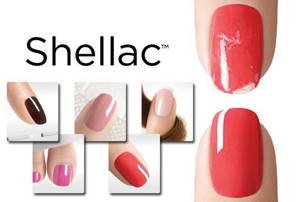
Some tips for craftsmen
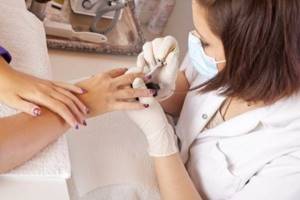
Masters are several times more susceptible to side effects from using toxic products than their clients. To make work safe, and also not to encounter the development of diseases, it is recommended to follow several tips:
- Use only high-quality products - this will affect the quality of your manicure and protect you from allergies, headaches and other side effects;
- Wear gloves. Yes, it will be uncomfortable at first, but by protecting your hands, you will save your skin from contact with harmful substances of the composition;
- Use a mask to reduce the amount of fumes and dust you inhale.
Personal protective equipment for a manicurist - all types of harmful effects in the salon and how to protect yourself
